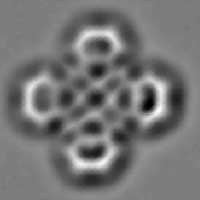 Injecting patients with a gel that would dissolve over several months could replace the need to administer daily or weekly shots. But to make this possible, researchers first had to create a Jello-like substance that could defy one of the fundamental laws of nature.
Injecting patients with a gel that would dissolve over several months could replace the need to administer daily or weekly shots. But to make this possible, researchers first had to create a Jello-like substance that could defy one of the fundamental laws of nature.
Monday, February 15, 2021
Injectable nanoparticle gels release medicines over time
 Injecting patients with a gel that would dissolve over several months could replace the need to administer daily or weekly shots. But to make this possible, researchers first had to create a Jello-like substance that could defy one of the fundamental laws of nature.
Injecting patients with a gel that would dissolve over several months could replace the need to administer daily or weekly shots. But to make this possible, researchers first had to create a Jello-like substance that could defy one of the fundamental laws of nature.
Sloshing quantum fluids of light and matter to probe superfluidity
 The 'sloshing' of a quantum fluid comprised of light and matter reveals superfluid properties. A team of physicists have successfully created sloshing quantum liquids in a 'bucket' formed by containment lasers.
The 'sloshing' of a quantum fluid comprised of light and matter reveals superfluid properties. A team of physicists have successfully created sloshing quantum liquids in a 'bucket' formed by containment lasers.
Researchers observe unexpected insulating phases by placing electrons on stacked monolayers of 2D semiconductors
 Materials having excess electrons are typically conductors. However, moire patterns -- interference patterns that typically arise when one object with a repetitive pattern is placed over another with a similar pattern -- can suppress electrical conductivity.
Materials having excess electrons are typically conductors. However, moire patterns -- interference patterns that typically arise when one object with a repetitive pattern is placed over another with a similar pattern -- can suppress electrical conductivity.
New skin patch brings us closer to wearable, all-in-one health monitor
 Engineers have developed a soft, stretchy skin patch that can be worn on the neck to continuously track blood pressure and heart rate while measuring the wearer?s levels of glucose as well as lactate, alcohol or caffeine.
Engineers have developed a soft, stretchy skin patch that can be worn on the neck to continuously track blood pressure and heart rate while measuring the wearer?s levels of glucose as well as lactate, alcohol or caffeine.
Luminescent windows generate energy from inside and out
 Engineers develop polymer cores that redirect light from any source to solar cells.
Engineers develop polymer cores that redirect light from any source to solar cells.
Adaptive microelectronics reshape independently and detect environment for first time
 Nanoscientists develop adaptive microelectronics that can move independently according to sensor data and align themselves specifically for activities - possible applications in biomedicine and bioneural interfacing.
Nanoscientists develop adaptive microelectronics that can move independently according to sensor data and align themselves specifically for activities - possible applications in biomedicine and bioneural interfacing.
Kagome graphene promises exciting properties
 Theoretical calculations predict that the compound known as 'kagome graphene' should have completely different properties to graphene. Kagome graphene consists of a regular pattern of hexagons and equilateral triangles that surround one another.
Theoretical calculations predict that the compound known as 'kagome graphene' should have completely different properties to graphene. Kagome graphene consists of a regular pattern of hexagons and equilateral triangles that surround one another.
The water surface is a fantastic place for chemical reactions
 Using an advanced technique, scientists have demonstrated that a chemical reaction powered by light takes place ten thousand times faster at the air-water interface - what we usually call the water surface - than in the bulk of the water, even when the light has equivalent energy.
Using an advanced technique, scientists have demonstrated that a chemical reaction powered by light takes place ten thousand times faster at the air-water interface - what we usually call the water surface - than in the bulk of the water, even when the light has equivalent energy.
Harnessing socially-distant molecular interactions for future computing
 Interactions between individual molecules on a metal surface extend for surprisingly large distances - up to several nanometers. A new study of the changing shape of electronic states induced by these interactions, has potential future application in the use of molecules as individually addressable units.
Interactions between individual molecules on a metal surface extend for surprisingly large distances - up to several nanometers. A new study of the changing shape of electronic states induced by these interactions, has potential future application in the use of molecules as individually addressable units.
Subscribe to:
Posts (Atom)
